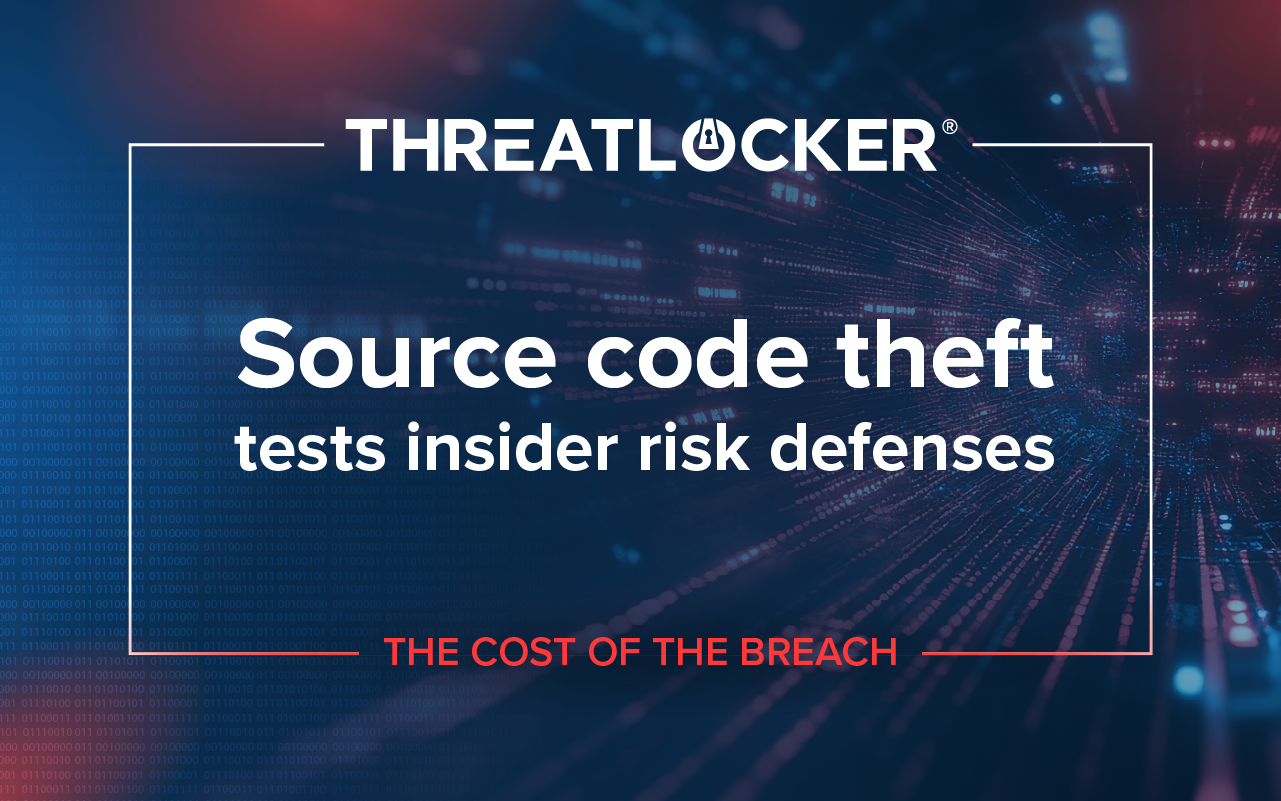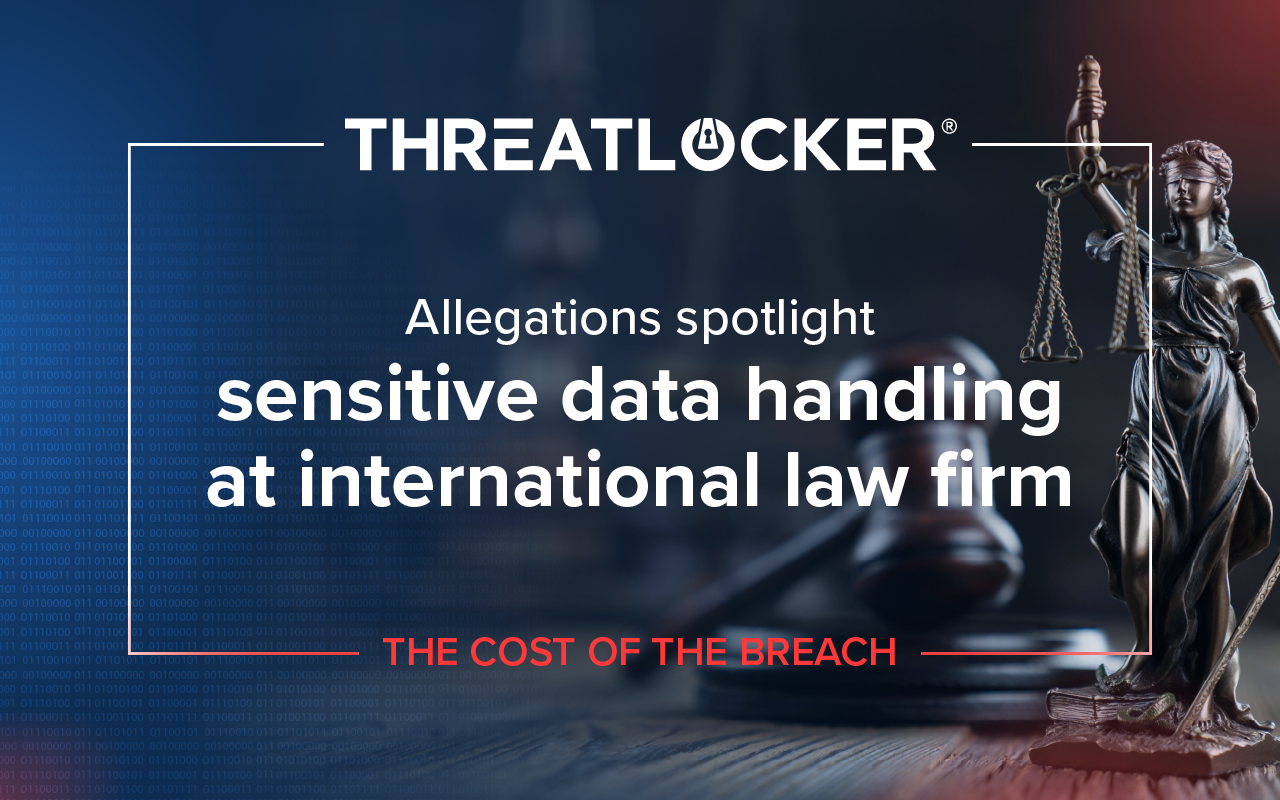Table of contents
When guests book a Margaritaville at Sea cruise, they expect sun, cocktails, and the illusion that life’s complications have been left onshore. But the escapist brand behind those carefree voyages has found itself caught in rougher waters, with a ransomware attack allegedly carried out by the group known as Lynx, followed by a class-action lawsuit filed on October 28.
The Margaritaville at Sea ransomware attack, allegedly conducted by the Lynx group in 2025, exposed passenger data and led to a class-action lawsuit. Security researchers link the incident to reused tools from the INC ransomware group, which exploits remote management systems. The case highlights how unprotected remote access and slow detection remain major risks in travel and hospitality, underscoring the need for Zero Trust protections such as application allowlisting and network segmentation.
Inside the Margaritaville at Sea ransomware attack
The complaint, Seaberg v. Classica Cruise Operator Ltd., Inc., claims that a September 2025 data breach exposed passenger information and that Margaritaville at Sea failed to employ adequate cybersecurity safeguards. Those allegations have not been proven. What is clear, though, is that another major brand is now grappling with the same threat vector that continues to punish even well-defended organizations: organized ransomware operations targeting trusted remote management infrastructure.
Who is the Lynx ransomware group?
“Lynx ransomware is essentially a rebrand of the INC ransomware from 2023,” said ThreatLocker® Threat Intelligence Manager John Moutos. “They took all the existing tools and infrastructure and put a new coat of paint on it.”
The group uses a “double extortion” playbook, stealing data before encrypting it and threatening to leak the information if ransom demands aren’t met. “They come in through remote management tools or leverage initial access brokers,” Moutos explained. “They don’t do anything new or novel. It’s textbook ransomware.”
In other words, Lynx isn’t breaking new technical ground. It’s exploiting predictable weak points that exist across industries, tools meant for legitimate IT maintenance that can become unguarded backdoors when attackers gain access.
A growing pattern of ransomware lawsuits in hospitality
While the complaint against Margaritaville at Sea alleges insufficient cybersecurity, the filing also demonstrates the growing speed with which companies are taken to court after ransomware incidents. Legal actions have become nearly automatic, an aftershock that follows the technical breach.
“This reads like every other case,” Moutos observed. “Had adequate security measures been implemented, it could have been prevented. Everyone says that after the fact, but these attackers are professionals. They’re leveraging infrastructure that’s already in place.”
From a risk perspective, the case underscores how even a single breach can become a multi-front crisis, technical, reputational, and legal. For businesses like cruise lines that handle sensitive personal data, the standard for “reasonable” cybersecurity grows stricter with every lawsuit.
Takeaway for CISOs
Cybersecurity leaders watching this case can draw three lessons:
- Attackers will continue to exploit convenience. RMM tools, remote access platforms, and helpdesk utilities are indispensable to IT teams, and irresistible to attackers.
- Detection speed matters. The faster a breach is discovered, the narrower the legal exposure and the faster recovery can begin.
- Litigation is part of the modern breach lifecycle. Legal preparedness should be built into every incident response plan.
Lessons from past hospitality ransomware breaches
Hotels and cruise operators have been repeat targets of enforcement actions and class litigation for more than a decade. The FTC’s landmark Wyndham case confirmed the agency’s authority to pursue hotels over alleged inadequate data security, after a series of intrusions at Wyndham properties in 2008–2009 exposed customer data and led to fraud losses.
State attorneys general have likewise pursued large hospitality brands. In 2017, New York and Vermont announced a settlement with Hilton over two 2015 payment card breaches that exposed more than 350,000 card numbers. In 2024, a 50-state coalition reached a $52 M settlement with Marriott connected to the multi-year Starwood reservation breach, paired with an FTC resolution that mandated security improvements.
Civil litigation has persisted alongside government actions. The Marriott breach spawned extensive multidistrict litigation, and in June 2025 the Fourth Circuit Court of Appeals addressed class certification issues tied to contractual waivers in that case, underscoring how hospitality breaches regularly surface in appellate courts.
How regulators define “reasonable cybersecurity”
For more than a decade, the FTC and, more recently, the SEC have outlined what “reasonable” looks like in practice. Two anchors matter for hospitality and travel brands.
FTC baseline expectations for data protection
- The FTC can pursue companies that fail to use reasonable security as an unfair practice. The Third Circuit’s decision in FTC v. Wyndham affirmed that authority in the hotel context and left the agency’s unfairness theory intact.
- The agency’s business guidance distills recurring expectations. Protect only what you need, limit access by role, encrypt sensitive data at rest and in transit, monitor for anomalous transfers, and have a tested response plan. These expectations often show up verbatim in consent orders and complaints.
- Recent FTC updates and cases reinforce that “reasonable” is measured against known risks and current practice, not just written policies. The Commission’s 2023 privacy and data security update cites enforcement against firms that stored sensitive data unnecessarily, lacked MFA, or failed to monitor for exfiltration.
SEC disclosure and governance requirements
- For public companies, the SEC’s cyber rules require disclosure of any material cyber incident on Form 8-K Item 1.05 within four business days of determining materiality. Limited delay is allowed only with written approval from the U.S. Attorney General for national security or public safety. Annual reports must also describe cyber risk management and governance.
- Staff guidance clarifies that if a company wants to speak early, before deciding materiality, it should not use Item 1.05. Use a different 8-K item for voluntary or non-material updates so investors are not misled. That distinction matters when ransomware incidents evolve quickly.
- Industry commentary and summaries echo the same timeline and content requirements that general counsel and CISOs are now operationalizing. The point is not just speed. It is documenting how you reach a materiality decision and how leadership oversees cyber risk.
What this means for Margaritaville-type cases
If a company is an SEC registrant, its playbook now pairs FTC “reasonable security” expectations with SEC timing and governance disclosures. In litigation that follows an alleged incident, plaintiffs often quote the FTC’s guidance as a proxy for what was reasonable at the time, while investors and reporters look to the 8-K record to judge decision-making and board oversight. Keeping logs, documenting access limits on remote tools, and recording the materiality analysis are not just security hygiene. They become the paper trail that shows regulators and courts what “reasonable” looked like before and after the breach.
What this case implies for defense
The alleged Margaritaville at Sea incident spotlights familiar weak points: remote access, credentials, and monitoring gaps.
In the major hospitality breaches of the past five years, investigators found that attackers moved through legitimate pathways, tools designed to help IT teams, not attackers. That means technical controls must be paired with policy and accountability. If the board and counsel cannot explain why a remote access rule exists, that rule can become a plaintiff’s exhibit.
The checklist that follows translates those lessons into preventive action. It reflects what regulators now expect, what insurers reward, and what incident responders wish had been in place before the first alert sounded.
Hardening checklist for CISOs
For all organizations
- Restrict remote management tools. Limit access to approved IP ranges, enforce multifactor authentication for every session, and disable generic admin accounts. Remote monitoring and management (RMM) systems remain the single most reliable doorway for ransomware groups.
- Segment data and systems. Keep personal, payment, and operational systems separate. Flat networks make lateral movement trivial. Apply network segmentation and least-privilege rules consistently, not just during onboarding.
- Continuously verify access. Adopt Zero Trust principles so that every session, user, device, and service, is authenticated and posture-checked before gaining entry.
- Monitor for misuse of legitimate tools. Collect and review logs for remote access utilities, PowerShell, and scripting activities. Alert on unusual file transfers, privilege escalations, or encryption behavior.
- Test backups and restoration speed. Backups protect only if you can prove they work. Perform restoration drills and keep immutable copies offline.
- Prepare the legal and communications cadence. Establish thresholds for disclosure, legal review, and media coordination before a breach happens. The first 72 hours often determine reputational outcome.
- Document everything. Maintain clear records of security policies, training, and control audits. Documentation is both a defense exhibit and an operational asset.
For ThreatLocker customers
- Enforce least privilege with Application Control. Block unauthorized executables by default and permit only approved applications. This eliminates the most common initial foothold for ransomware.
- Contain lateral movement through Ringfencing. Define strict boundaries between applications and data repositories. Prevent even trusted apps from connecting to storage or network locations they don’t need.
- Manage elevated rights with Privileged Access Management. Require explicit approval for administrative actions and temporary escalation only when necessary. Audit every privileged session.
- Limit RMM exposure using Network Control. Whitelist known IP addresses and deny all unrecognized traffic to RMM ports. Apply policy enforcement across both on-prem and cloud environments.
- Monitor and verify with Audit and Insights. Use centralized logging to detect anomalies such as unapproved software launches or sudden mass encryption. Generate regular review reports for compliance evidence.
- Protect data recovery paths with Storage Control. Ensure backup volumes are read-only or isolated from standard user and system access, reducing the chance of malicious encryption.
- Tie it all together with granular policy review. Schedule recurring policy audits to confirm configurations match evolving regulatory and business needs. A strong paper trail of active review demonstrates “reasonable security” to regulators and insurers alike.
The bigger picture for the travel industry
The alleged breach at Margaritaville at Sea illustrates a grim reality: Attackers don’t need innovation when businesses keep using the same remote access tools that make ransomware possible. This incident highlights how today’s interconnected systems can turn a moment of paradise into a compliance and recovery marathon.
As Moutos put it, “Everyone’s probably going to get free credit monitoring, and nothing’s going to change, unless organizations start treating RMM tools like the crown jewels they really are.”
The real lesson for the industry isn’t that Margaritaville was breached. It’s that every organization relying on remote management and third-party access already sits in the same boat.
Frequently Asked Questions
What happened in the Margaritaville at Sea ransomware attack?
In September 2025, Margaritaville at Sea was allegedly targeted by the Lynx ransomware group, which uses double extortion tactics. A class-action lawsuit followed, claiming inadequate safeguards.
Who is the Lynx ransomware group?
Lynx is a rebrand of the INC ransomware group, which abuses remote management tools to deploy encryption payloads and extort victims.
Why is the Margaritaville case significant?
It demonstrates how ransomware can trigger technical, reputational, and legal crises for travel and hospitality businesses.
How can travel companies prevent ransomware attacks?
Zero Trust controls, including application allowlisting, Ringfencing™, and Network Control, can block unauthorized execution and lateral movement.
What do regulators mean by “reasonable cybersecurity”?
The FTC and SEC expect encryption, least privilege, MFA, monitoring, and timely breach disclosure as minimum standards for data protection.





